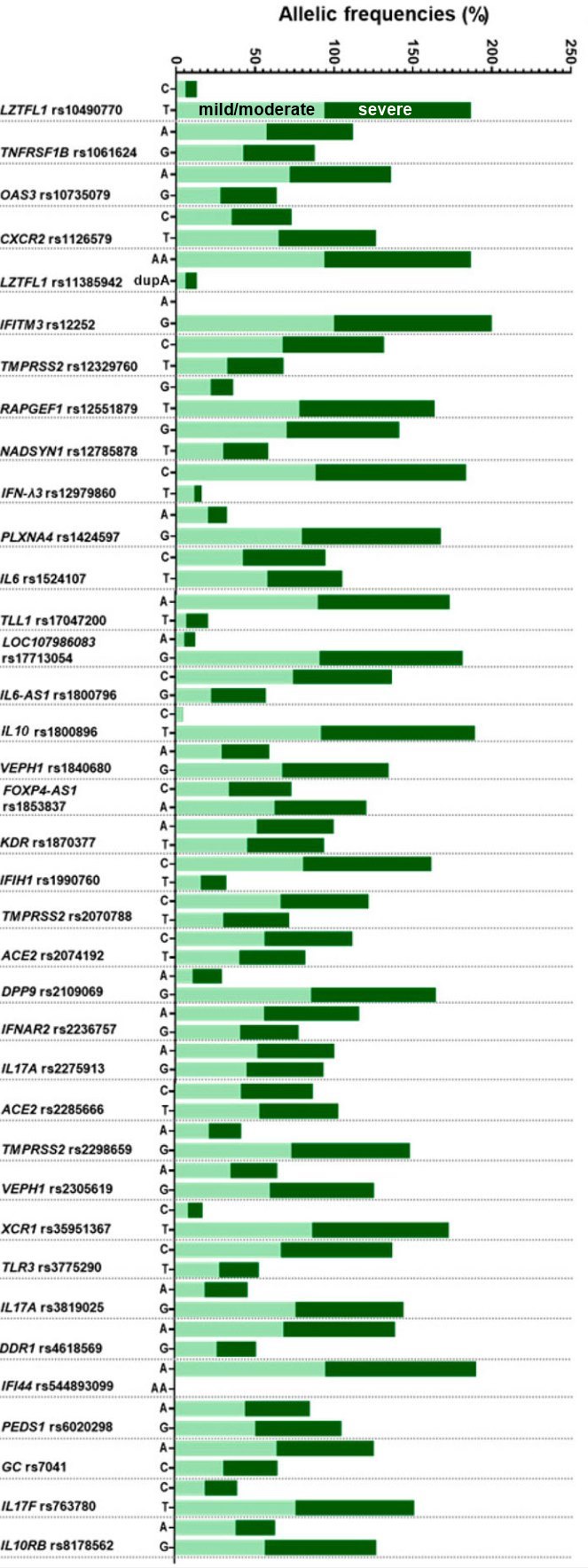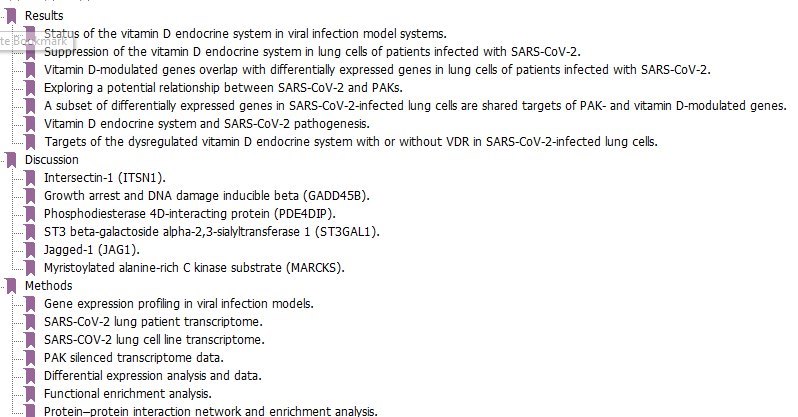COVID virus alters the activation of 100 vitamin D related genes in the lung
Evidence of a dysregulated vitamin D endocrine system in SARS-CoV-2 infected patient's lung cells
Sci Rep . 2021 Apr 21;11(1):8570. doi: 10.1038/s41598-021-87703-z.
Bijesh George 1 2, Revikumar Amjesh 1, Aswathy Mary Paul 1 2, T R Santhoshkumar 1, Madhavan Radhakrishna Pillai 3, Rakesh Kumar 4 5 6
Up and Down regulation (One of scores of charts in the PDF)

📄 Download the PDF from VitaminDWiki
Table of contents

Although a defective vitamin D endocrine system has been widely suspected to be associated in SARS-CoV-2 pathobiology, the status of the vitamin D endocrine system and vitamin D-modulated genes in lung cells of patients infected with SARS-CoV-2 remains unknown. To understand the significance of the vitamin D endocrine system in SARS-CoV-2 pathobiology, computational approaches were applied to transcriptomic datasets from bronchoalveolar lavage fluid (BALF) cells of such patients or healthy individuals. Levels of vitamin D receptor, retinoid X receptor, and CYP27A1 in BALF cells of patients infected with SARS-CoV-2 were found to be reduced. Additionally, 107 differentially expressed, predominantly downregulated genes, as potentially modulated by vitamin D endocrine system, were identified in transcriptomic datasets from patient's cells. Further analysis of differentially expressed genes provided eight novel genes with a conserved motif with vitamin D-responsive elements, implying the role of both direct and indirect mechanisms of gene expression by the dysregulated vitamin D endocrine system in SARS-CoV-2-infected cells. Protein-protein interaction network of differentially expressed vitamin D-modulated genes were enriched in the immune system, NF-κB/cytokine signaling, and cell cycle regulation as top predicted pathways that might be affected in the cells of such patients. In brief, the results presented here provide computational evidence to implicate a dysregulated vitamin D endocrine system in the pathobiology of SARS-CoV-2 infection.
